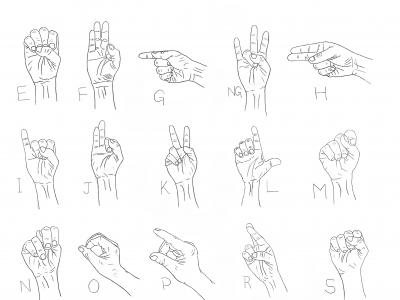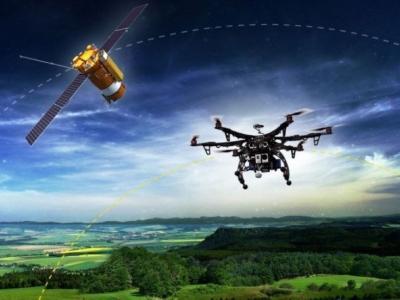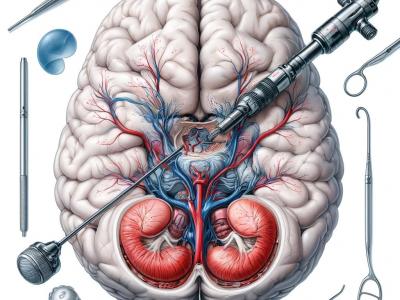Artificial Intelligence
In today’s world, deaf and mute person face many problems in their daily life due to miscommunication as well as misunderstanding. These problems have existed since long ago but are ultimately being solved with the introduction of Hand sign language. There exist many different sign languages such as ASL, ISL, etc. But for regional and low-resource languages like Mizo, the state language of Mizoram, spoken by the northeastern people in India, not much research has been done on the advancement of sign language based on the Mizo language.
- Categories:
 315 Views
315 ViewsIn today’s world, deaf and mute person face many problems in their daily life due to miscommunication as well as misunderstanding. These problems have existed since long ago but are ultimately being solved with the introduction of Hand sign language. There exist many different sign languages such as ASL, ISL, etc. But for regional and low-resource languages like Mizo, the state language of Mizoram, spoken by the northeastern people in India, not much research has been done on the advancement of sign language based on the Mizo language.
- Categories:
 135 Views
135 ViewsThis large dataset includes six small datasets, including two types, one contains the original node relationship information and node feature information, please use it through the common network construction methods; the other is the dataset which has been processed, including the direct edge information and node's association information, which can be used to construct the network directly through the network construction methods.
Translated with www.DeepL.com/Translator (free version)
- Categories:
 139 Views
139 Views
The data set is from the Case Western Reserve University Rolling Bearing data set. SK6205 bearing located at the drive end is selected as the research object, and the acquisition frequency is 12KHz. The fault type is divided into three types, namely inner ring fault, rolling body fault and outer ring fault, and each fault type is divided into three fault sizes: 0.007, 0.014 and 0.021 inches.The length of each sample is 1024 and the repetition rate is 50%
- Categories:
 349 Views
349 Views
We collected fundus photos from the Kangnam Sacred Heart Hospital, Hallym University School of Medicine, Seoul, South Korea (IRB approval number: 2022-10-026), that were obtained from 2000 to September 2022. The fundus photographs were taken by five skilled examiners using the KOWA Nonmyd 8S Fundus Camera (KOWA company, Japan). Among the 2,000 images, we chose 50 test images that were characterized as ``bad-quality'' due to one of the following reasons: media opacity, small pupil, or poor patient cooperation.
- Categories:
 82 Views
82 ViewsDataset Description
This dataset, named MultiSense, is designed to enhance disaster response by providing comprehensive data from multiple sources. It comes in two versions: balanced and unbalanced. The dataset consists of five distinct classes, each representing different types of events or conditions:
-
Syria Earthquake: This class includes imagery and video footage related to earthquake damage. The data captures the aftermath of seismic events, showcasing various degrees of destruction.
- Categories:
 237 Views
237 ViewsThis dataset consists of 462 field of views of Giemsa(dye)-stained and field(dye)-stained thin blood smear images acquired using an iPhone 10 mobile phone with a 12MP camera. The phone was attached to an Olympus microscope with 1000× objective lens. Half of the acquired images are red blood cells with a normal morphology and the other half have a Rouleaux formation morphology.
- Categories:
 850 Views
850 ViewsThis dataset comprises 1718 annotated images extracted from 29 video clips recorded during Endoscopic Third Ventriculostomy (ETV) procedures, each captured at a frame rate of 25 FPS. Out of these images, 1645 are allocated for the training set, while the remainder is designated for the testing set. The images contain a total of 4013 anatomical or intracranial structures, annotated with bounding boxes and class names for each structure. Additionally, there are at least three language descriptions of varying technicality levels provided for each structure.
- Categories:
 388 Views
388 Views
To develop radio frequency-based drone recognition, we release an RF spectrogram dataset, named DroneRFb-Spectra. All signals of drones were collected by a Universal Software Radio Peripheral (USRP) device, recording three Industrial Scientific Medical (ISM) bands under urban scenarios. The classes cover 7 common brands, i.e., DJI, Vbar, FrSky, Futaba, Taranis, RadioLink, and Skydroid, with a total number of 14460. Each spectrogram has been downsampled to the size of 512x512 from the original IQ data with a length of 50ms by using the short-time Fourier transform.
- Categories:
 697 Views
697 Views


